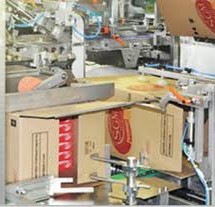
Automated packaging can improve time frames and cut costs of production, ultimately improving profits. But not all businesses take automation all the way, often ignoring the positive impact end-of-line automation can have on profits.
Automation of primary and secondary packaging has become the norm in many industries, primary being the first layer in which items are packed. Secondary packaging includes labels for items like bottles, as well as cartons and flow wrappers, and is usually the packaging that is designed for branding goods and for display at point-of-sale, which makes it imperative for practically any manufacturing business.
End-of-line packaging (also called tertiary packaging), on the other hand involves shrink wrapping bundles in the form of cases and crates, and palletizing and sealing them to get the goods to point-of-sale or a delivery point. So it isn’t that surprising that end-of-line automation is not as widely implemented as primary and secondary packaging.
Investing in End-of-Line Automation
Traditionally manual packing has been the most common option for end-of-line packaging. It certainly did seem to make sense when labor costs were low and the additional capital investment for suitable machinery was high. But today there are many solutions that can improve both production and profitability.
Manual packing costs have increased as labor has become more expensive, while the costs of automation have (to a degree) decreased, and today there are many solutions for cost-effective end-of-line automation. However the best advice is to choose a simple solution that meets the specific needs of what has to be sorted. For instance if you choose a flexible machine that can do just about anything, there’s a good chance that you will end up investing too much money in a machine that is too complex for your needs.
There is no doubt that end-of-line packaging machines can be a very valuable investment but they do need to be chosen carefully according to the goods that are being packaged. It is also important that changeover to any new system will be simple.
Technik has several end-of-line automated machines available to streamline the full packaging process. These include:
- Case packers that may be used to pack finished goods into corrugated cases that are then closed and sealed with glue or tape. These can pack 25 cases per minute, and the dimensions of cases range in length from 70 mm to 400 mm; in breadth from 100 mm to 400 mm; and in height from 200 mm to 600 mm.
- Solid products may be packed into compact tray-and-lid units that can be easily stacked. This is a very compact fully automated solution and it allows finished cartons to be sorted and stacked in any orientation. Trays and lids are placed around the stack and then folded and glued as a unit. These machines can also handle 25 cases every minute.
Primary packages may also be wrapped so that they can be quickly and efficiently packed and stacked – and easily sorted – by wrap-around machines. This form of automated packaging is also ideal for cases that need to be open ended. Technik’s wrap-around machines also pack 25 cases per minute. Dimensions of cases suitable for packing this way range from 200 mm to 600 mm (length); 100 mm to 400 mm (breadth); and 70 mm to 400 mm (height). The tray magazine measures 650 mm x 1,000 mm (or one meter.)
Contact the friendly professionals at Technik Packaging Machinery for more information about automating end-of-line packing and ensuring you maintain maximum profitability.

Follow Us!